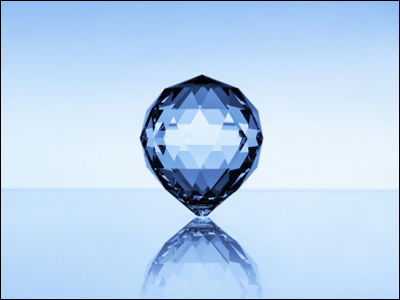Synthetic diamonds that are harder than the real thing are formed in the laboratory

Diamond, which is very popular as an ornament, is a very hard substance and is also used as a material for
Phys. Rev. B 103, L100101 (2021) --Elastic moduli of hexagonal diamond and cubic diamond formed under shock compression
https://journals.aps.org/prb/abstract/10.1103/PhysRevB.103.L100101

Lab-made hexagonal diamonds stiffer than natural diamonds | WSU Insider | Washington State University
Hexagonal diamonds are formed when graphite is subjected to strong impact and heat, such as due to a meteorite impact. While ordinary diamond has a structure called cubic , hexagonal diamond is theoretically harder than cubic diamond because carbon atoms are arranged in a hexagonal pattern. It was.
However, natural hexagonal diamonds have many impurities because they are found in craters caused by meteorite impacts, and pure hardness has never been measured. In addition, research on the formation of hexagonal diamonds in the laboratory has been conducted so far, but the hexagonal diamonds formed are too small or can exist for too short a time, which leads to the measurement of hardness. There wasn't.
In the research conducted this time, high energy due to the impact of a meteorite was reproduced by colliding a disk-shaped graphite of 10 cent coin size (diameter about 18 mm) with a wall at a speed of about 24,100 km / h. As a result, we also succeeded in forming a hexagonal diamond large enough to measure hardness.

The formed hexagonal diamond collapses in billions of seconds, but the research team took advantage of the fact that the harder the material, the faster the sound waves move through the material, and the sound waves in the hexagonal diamond.
According to the research team, hexagonal diamonds showed higher rigidity than cubic diamonds. In addition, the research team concludes that 'hexagonal diamonds may be harder than cubic diamonds' from the hardness estimated based on stiffness.
'Diamonds are not only very hard crystals, they also have beautiful optical properties and high thermal conductivity,' said Yogendra Gupta, a member of the research team and director of the Institute of Impact Physics at Washington State University. The hexagonal diamonds formed in this study have significantly higher rigidity and hardness than ordinary diamonds, 'he said, highlighting the hardness of hexagonal diamonds.
'Diamonds have been used in industrial products such as drill bits because hard materials have excellent machining capabilities. Hexagonal diamonds are harder than cubic diamonds,' said Travis Voltz, a member of the research team. Due to its high potential, it may be used as an alternative to cubic diamonds in all applications where cubic diamonds have been used, 'he said, hoping for stable production of hexagonal diamonds in the future. I am.
In 2020, a research team at the University of Tsukuba predicts the existence of 'penta diamonds, ' which are said to be harder than cubic diamonds.
The existence of a 'penta diamond' that is even harder than that diamond is predicted-GIGAZINE

Related Posts:
in Science, Posted by log1o_hf






